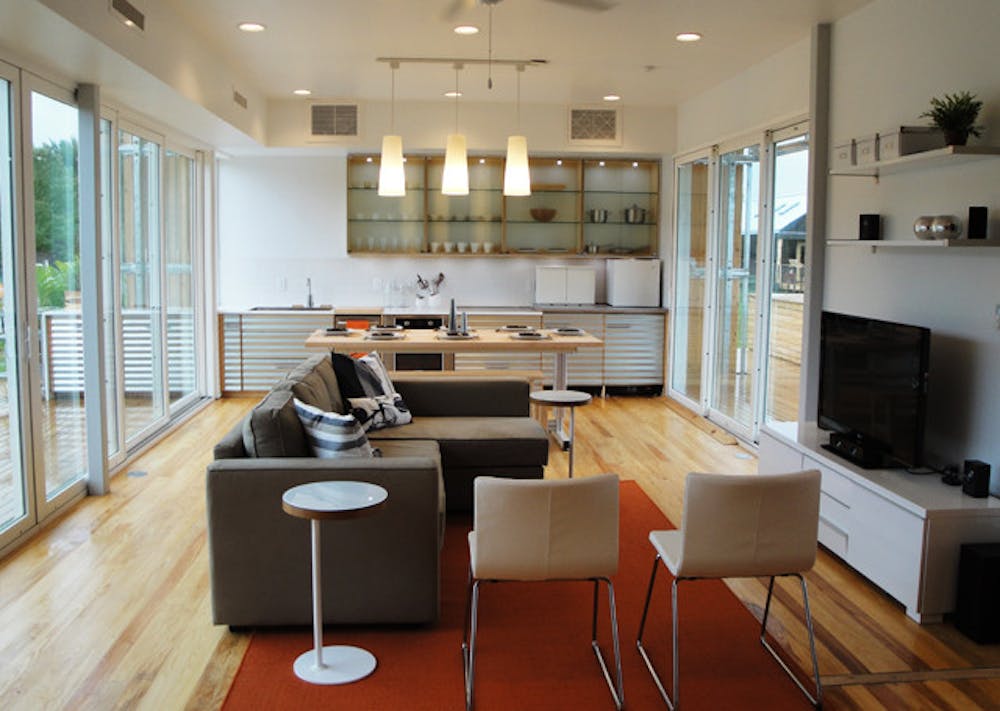For its movie night competition, Team Florida made popcorn and played the movie "Inception."
Pamela Cotera, a first-year PhD candidate in interior design, said this was appropriate because of the central theme of architecture.
For a recent project, UF students designed a solar-powered, energy-efficient house and made it a reality - the FLeX House.
UF students teamed up with students from the University of South Florida, Florida State University and the University of Central Florida to build the house. The four universities formed Team Florida, and the FLeX House is their entry into the U.S. Department of Energy Solar Decathlon 2011.
Team Florida is one of 19 teams currently competing in the solar decathlon, which runs until Sunday. The competition is comprised of 10 contests, including architecture, market appeal, affordability, energy balance and home entertainment, a contest in which teams put on movie nights for their neighbors.
The goal of the FLeX House was to build a flexible house that would appeal to a design- and sustainability-savvy couple, said Cotera, the team's lead interior designer.
"We're showing people what the new technologies are and some of the easy ways to use a couple to improve your own consumption," she said.
Each university had a different contribution to the FLeX House. USF was responsible for architecture, FSU for engineering, UCF for the home's smart systems and UF for interior design.
One of the house's unique qualities - and one of the reasons for its name - is the flexibility of the design itself. The one-bedroom, one-bathroom house is comprised of three modules, two of which fit into the largest piece. The entire unit was transported on one semitrailer.
The team started planning in August 2010 and completed the design at the end of last semester. The house was constructed in Tampa during the summer, and in September it was deconstructed and transported to Washington D.C. for the competition.
The team built the FLeX House specifically for a Florida climate. It was built with impact-resistant glass capable of enduring a Category 3 hurricane. Taking Florida's humidity into consideration, the team incorporated a system that acts as a dehumidifier in the house.
When building the house, the group stayed within its budget, which was between $250,000 and $300,000.
"People always have this impression that to be efficient, it is going to cost an enormous amount of money," Cotera said. "For all the design aspects and innovative technologies, it's well within the range of being affordable."
Last year, UF's team was voted fan favorite in an international solar decathlon. Those interested in following the competition or in voting for this year's People's Choice Award can visit solardecathlon.gov.
Team Florida, a collaboration of universities in the state, designed FLeX House to compete in the U.S. Department of Energy Solar Decathlon 2011. Students from UF were responsible for the interior design of the building.






